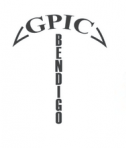  
Shock Value: Gold nugget formation from earthquake-induced piezoelectricity in quartz.
Orogenic gold deposits have contributed the majority of gold recovered globally throughout history. However, the mechanism(s) that concentrate gold to extremely high bonanza grades in small domains within these deposits remains enigmatic.
We have proposed that gold supersaturation in fluids introduced during seismic periods can lead to the deposition of abundant gold nanoparticles in quartz-carbonate veins. Subsequent pressure dissolution of vein quartz and carbonate during inter-seismic intervals allow episodic increase in the gold/quartz ratio and permits liberation and migration of gold nanoparticles, promoting gold growth in favourable textural settings.
Galvanic corrosion and brittle fracturing of auriferous sulphides during interseismic periods allow additional remobilization and/or enrichment of sulphide-hosted gold. Repetition of this mechanism over the time scale of deposit formation acts to concentrate gold within the lodes. This gold ore upgrading model, referred to as “aseismic refinement,” provides a new insight for the genesis of ultra-rich gold mineralization.
Speaker
Chris Voisey
Chris Voisey completed his B.Sc. (Hons) degree at the Memorial University of Newfoundland, Canada, and PhD at Monash University, Australia. He is currently a research fellow at Monash University where he continues to work on the genesis of high-grade gold mineralisation. His main interests are uniting different disciplines such as geochemistry, electrochemistry, materials and nano science, and structural geology to fill in gaps of knowledge that provide a holistic view on deposit formation.
FREE, but registration is required. Dinner at own cost.

Download flyer here!
|